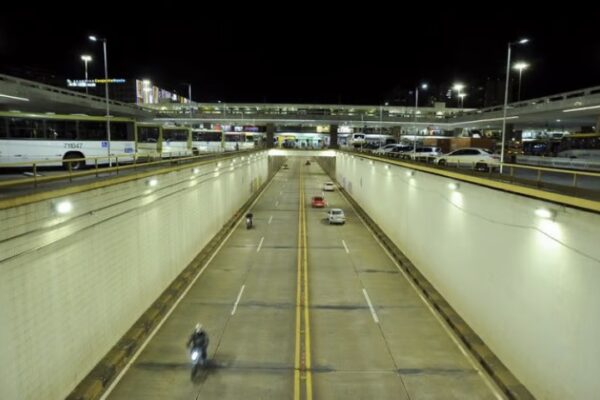Supposedly a dream of Dom Bosco, designed by Lúcio Costa, decorated by Niemeyer, and envisioned by Juscelino, Brasília is beautiful. Don’t get me wrong—I love Brasília and consider myself a true candanga: a Northeasterner (originally from Rio Grande do Norte) who had the privilege of living in Brasília for a little over three years. Like all the other candangos, I left the Northeast to continue the ongoing construction of the federal capital. My dream was to succeed and expand my horizons, which were quite limited in one of the poorest state capitals in the country.
Brasília, along with Soviet and Chinese cities, is often cited as an example of planned cities that almost entirely eliminated market forces to elevate the well-being of their citizens. There’s no denying the privilege of living in the Pilot Plan of the federal capital, but one also cannot ignore the inaccessibility caused by the area’s high prices. Its eccentricity makes it beautiful, exotic, and unimaginable. It’s no surprise that Brasília holds the record for the largest listed area in the world and was inscribed by UNESCO on the World Heritage List in 1987. However, any urban planning scholar knows that Brasília is often used as a synonym for what not to do.
Starting with Lake Paranoá, Brasília is an entirely artificial city—worthy of starring as one of Barbie’s fabulous houses. The inaccessibility of Brasília cannot be denied, whether in terms of urban mobility, cost of living, or housing costs.
Cities without markets are an urban planner’s dream, as Alain Bertaud noted in his work Order Without Design. Only in this way can planners create the most futuristic urban design, and then markets would adapt to people and cities. However, this order does not follow the hidden mechanisms that make cities spontaneously function.
Brasília is the perfect example of a city that, by the mere desire of its planners, cannot enjoy the benefits of verticalization in the Pilot Plan. It’s no wonder that anyone who lives or has lived in Brasília is well aware of how the pricing system works in the area: despite any improvements, prices always rise naturally. After all, there’s population growth and perpetual demand for housing in the country’s capital, but there’s no parallel increase in supply.
The regulations that dictate the construction forms of the Pilot Plan, both in terms of shape and height, completely contradict the expected market forces by preventing new constructions in areas of highest demand. Thus, densification is forced into satellite areas, outside the urban limits, far from the capital’s major employment hubs, and with low population density.
The neighborhood of Águas Claras, where verticalization is permitted, has attracted a growing population with pent-up demand that doesn’t want to be limited to the old buildings of the Pilot Plan and doesn’t have enough capital to live in residences in the South or North Lakes. Even before this migration within the city, part of the population was already moving to commercial areas that were not initially designed to house residents.
Being treated as a large open-air museum, the city indeed has cultural value, especially for Brazilians. Certainly, this was the political and urbanistic choice of the planners for various reasons. However, the model was not copied anywhere else in the world precisely because it is unsustainable, inefficient, and inaccessible.
It is certain that the historical period of Brasília’s construction and JK’s developmental visions—with a broad objective of expanding Brazilian road transport—greatly influenced the city’s dependence on automobiles. Even more than 60 years after its founding, the city’s origin, sustained by the primacy of individual transportation, makes Brasília a city that is not very friendly to pedestrians and public transportation in general—whether it be the metro or buses.
For example, the Eixão Roadway—which runs from the south wing to the north wing of Brasília—despite being only thirteen kilometers long, takes almost two hours to travel from end to end by public transport. If traveled by car, it takes only twenty minutes. If this is true for the city’s most central area, it becomes even more pronounced in peripheral regions or those that, despite being close, have no public transport system to facilitate mobility.
Thus, both from the perspective of verticalization and urban mobility, Brasília is the perfect example of when unchallenged regulatory logic leads to inefficiencies. The city was indeed chosen to be an open-air museum and is not expected to change this pattern, despite its inaccessibility. Living in the Pilot Plan brings quality of life to its residents and a touch of luxury to visitors of the federal capital.
Brasília will certainly always be unique. After all, there is no other place in the world willing to replicate its costs and inefficiencies, despite its undeniable beauty.


